Willemstad, Curaçao
You may be surprised to learn that the above image was captured on a tropical island in the Southern Caribbean, located only 100 kilometers north of Venezuela. It’s okay, I was too.
The first time I saw a photo of these colourful buildings I couldn’t believe I was looking at a Caribbean island. It felt so European.
I knew at that moment that we must visit Curaçao.
The capital city of Curaçao is Willemstad, widely known for its historic old town and pastel-colored colonial architecture. But there’s much more to this town than its pretty buildings and bustling waterfront. The Historic Area of Willemstad, Inner City and Harbour was designated a UNESCO World Heritage Site in 1997.
Description from the UNESCO World Heritage Site website:
The people of the Netherlands established a trading settlement at a fine natural harbour on the Caribbean island of Curaçao in 1634. The town developed continuously over the following centuries. The modern town consists of several distinct historic districts whose architecture reflects not only European urban-planning concepts but also styles from the Netherlands and from the Spanish and Portuguese colonial towns with which Willemstad engaged in trade. [read more on the UNESO website]
We spent the morning exploring the old town center. We ate breakfast at an open-aired restaurant that sits on the waterfront, we walked across the iconic Queen Emma Bridge and we wandered through the town’s historical streets, passing a floating fish market along the way.
Here are a few photos from our time in Willemstad.
The first thing we did when we arrived at the old town was find a restaurant for breakfast.
We caught a free shuttle from our hotel but it departed early in the morning, which meant we had cranky boys that needed fueling up. Pancakes and bacon did the trick. We ate the most delicious freshly baked croissants at that restaurant. I would return just for those fluffy, buttery croissants.
Read more – Our experience at the Lions Beach Resort, Curacao
These building are located across Sint Anna Bay.
Another view from the restaurant. You can’t get any closer to the water than that.
When we arrived in Willemstad the Queen Emma Bridge was not open. It’s a pontoon bridge, so it closes regularly to allow ships to pass through to Schottegat Harbour.
If you look closely, you can see the Queen Emma Bridge sitting in front of the blue and red buildings. The railings you see along the waterfront is the bridge.
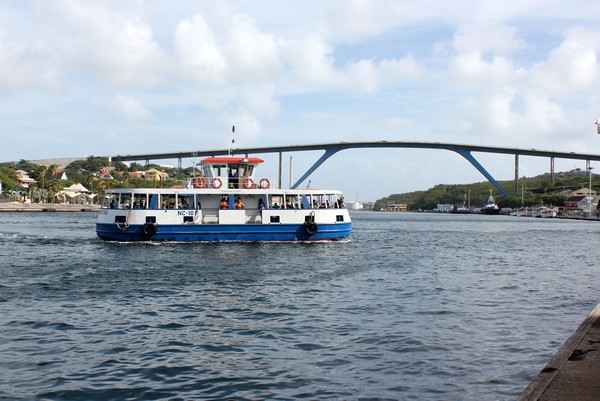
When the bridge is closed, people are transported across the channel by ferry.
While eating breakfast on the waterfront, this big tug boat guided a massive ocean freighter through the narrow channel. It was so cool to witness this. It felt like the ship was only 25 feet in front of us.
For perspective, the tug boat is probably 1/15 the size of the ocean freighter. I did not use my zoom for the above the photo.
I had to let the ship pass us completely in order to capture it’s full frame. Huge!
After the ship passed, the bridge began to swing across St. Anna Bay to connect the Punda and Otrobanda quarters of Willemstad. I captured the process using the Hyperlapse app on my phone, but sadly my phone had a meltdown shortly afterwards and I didn’t back up my Hyperlapse videos.
Another reminder to back up your phone files!
The process to swing the bridge across the channel only takes a few minutes to complete. Once completed, about a hundred people quickly crossed the bridge.
The bridge is known by locals as “Our Swinging Old Lady“.
Family selfie on the waterfront. Embrace the selfie stick! Here’s the one we use.
View of the buildings from the bridge. Not the best time of day to be shooting, but when traveling with two young boys, you take what you can get!
A different view of the restaurants along the waterfront. Doesn’t it feel European?!
We regret not bringing our quality stroller with us on this trip. This one sucks.
Related – 15 Baby travel items we travel with (and you should too)
The streets of Willemstad reminded us of Old Town San Juan, Puerto Rico.
Local fisherman display the morning’s catch at the floating Fish Market.
As we continued past the fish market we stumbled upon a row of fresh fruit stands.
Connor is pretty happy about getting a fresh banana. The fruit is so ripe and sweet.
‘Dushi’ means something very different on the Dutch Caribbean islands of Aruba, Bonaire and Curacao. Here, it’s used to describe the good things in life, like friendly people or tasty food.
If you’re immature, like me, you took this word to mean something completely different. Get your head out of the gutter, geez!
Read more posts from the Caribbean:
- The colourful streets of Old San Juan, Puerto Rico
- Taking a Caribbean Cruise? Here’s what you need to know
- First impressions and observations from our trip to Aruba
- Things to do in St Lucia while on a Caribbean Cruise
Have you visited Willemstad, Curacao?
Share your experience in the comments below. Our readers thank you!
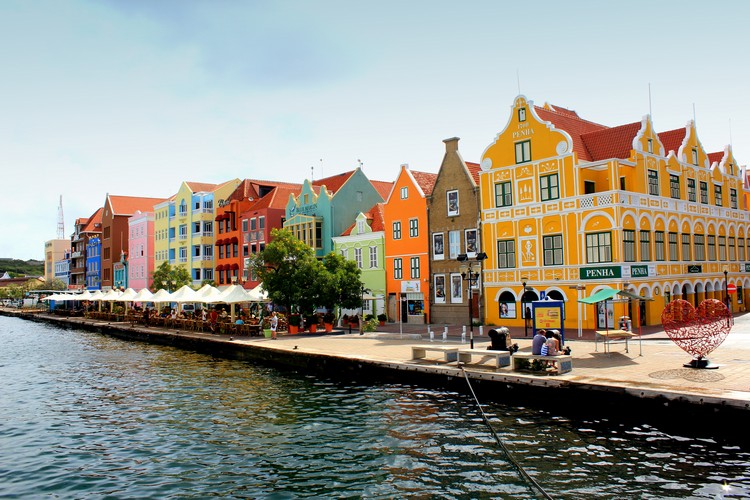
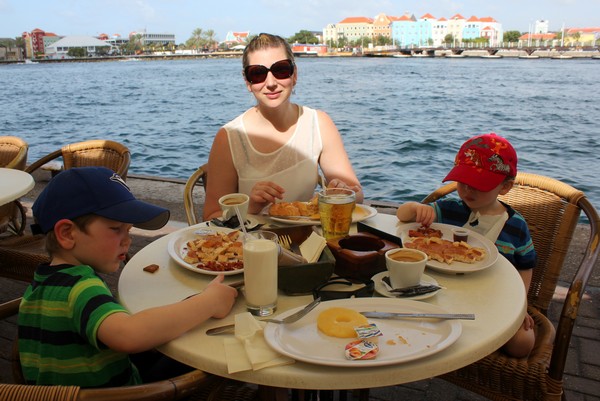
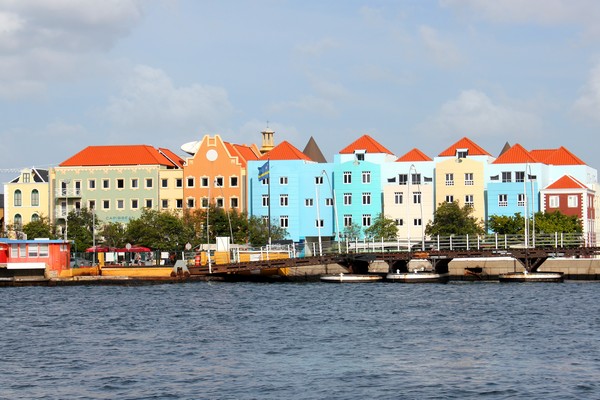
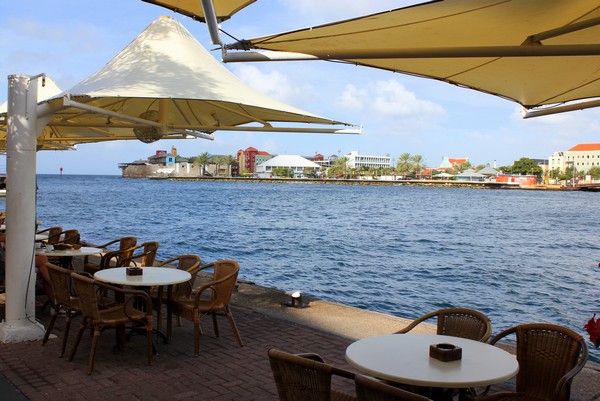
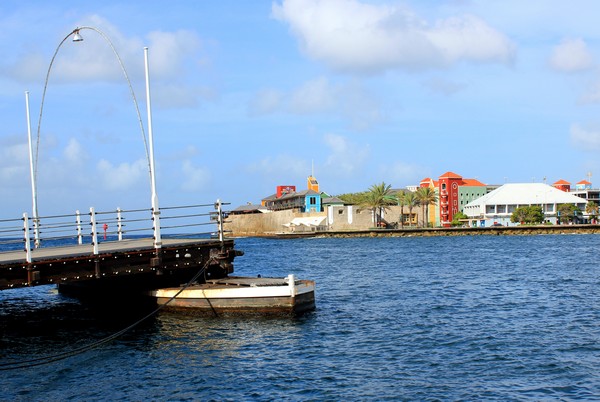
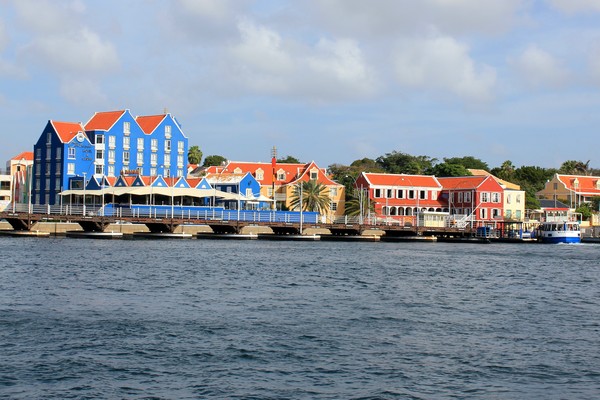
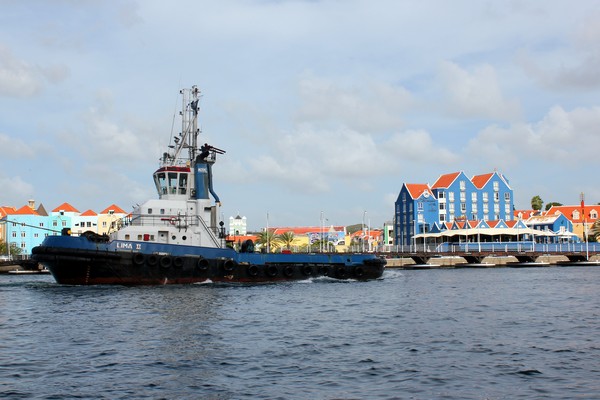
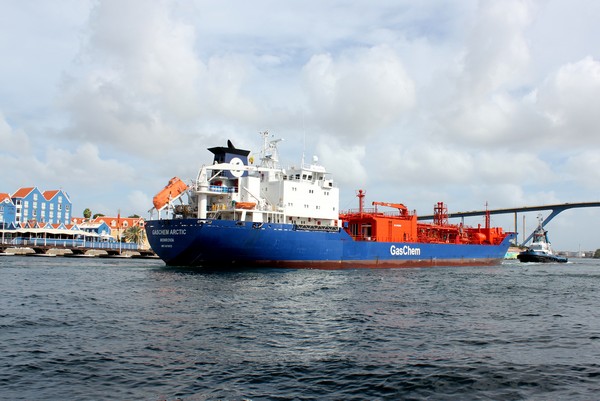
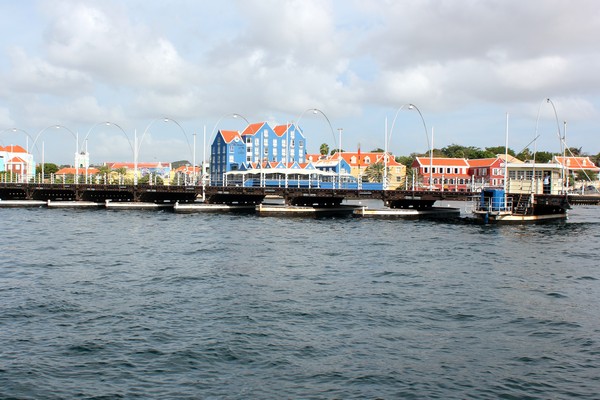
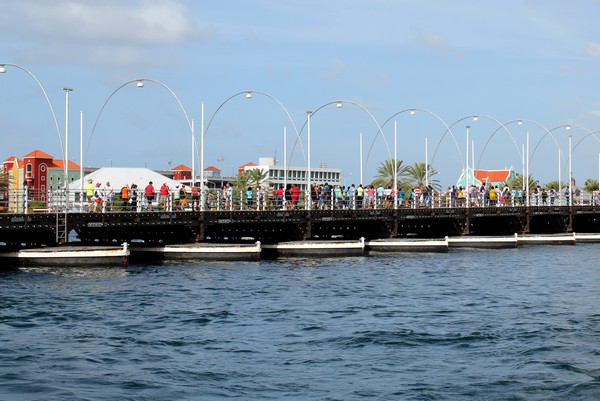
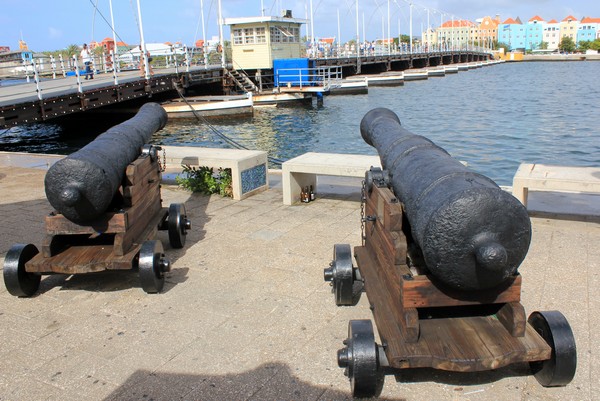
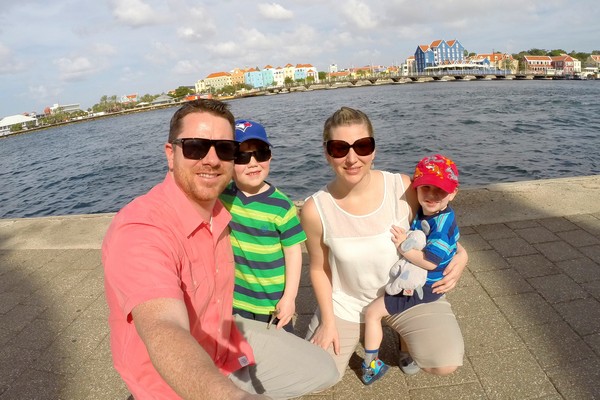
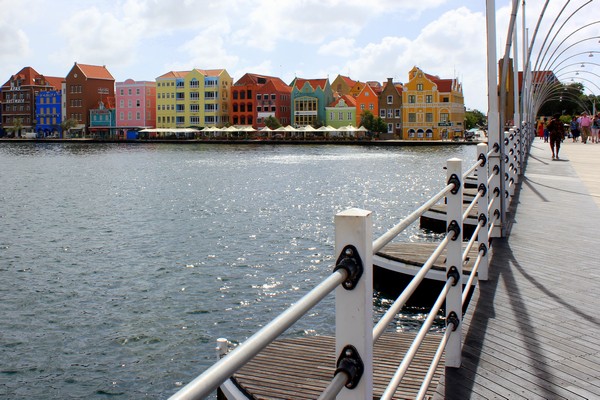
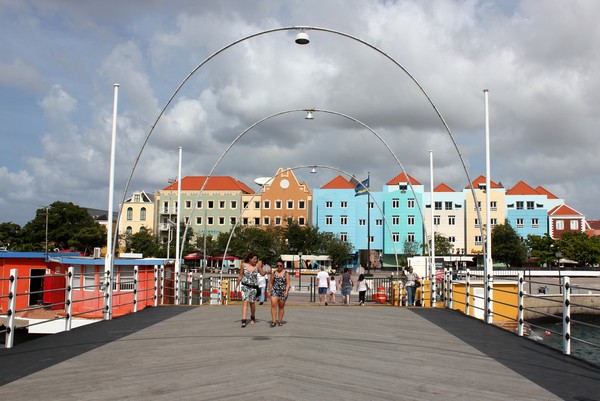

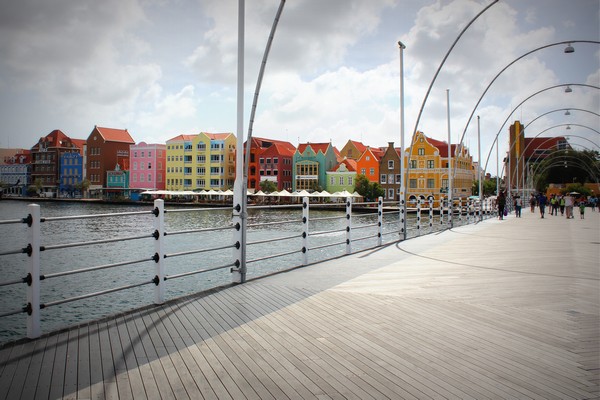
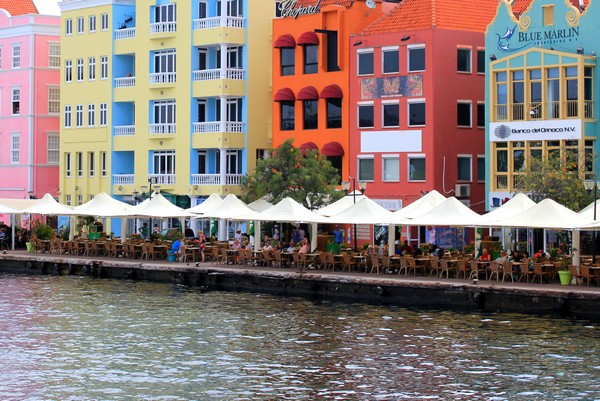
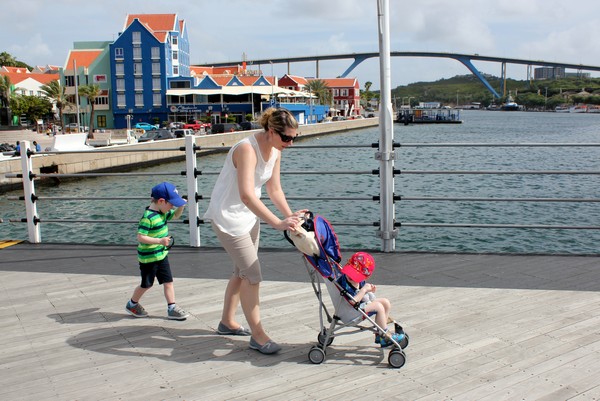
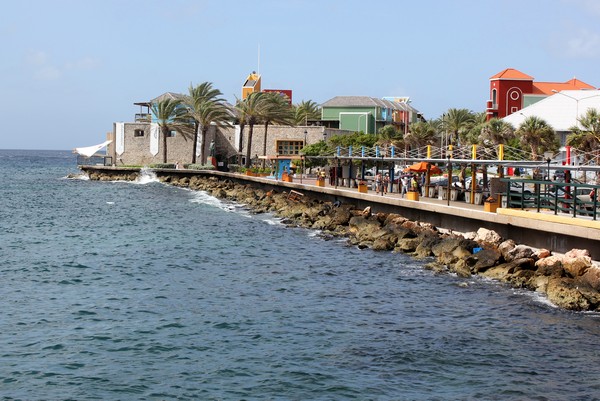
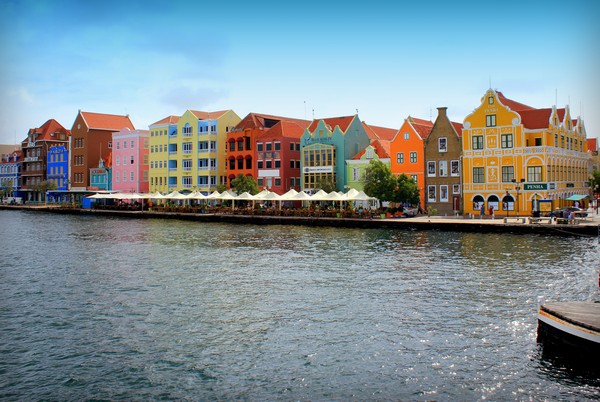
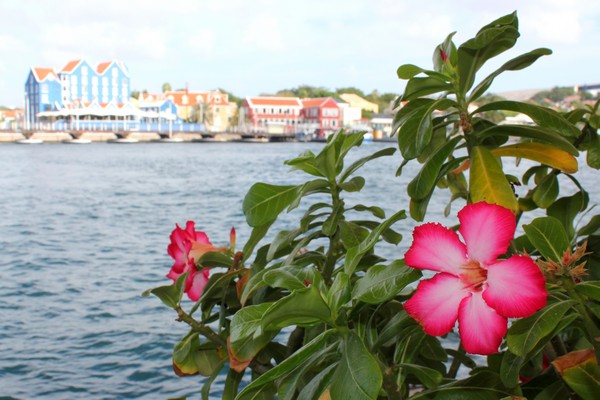
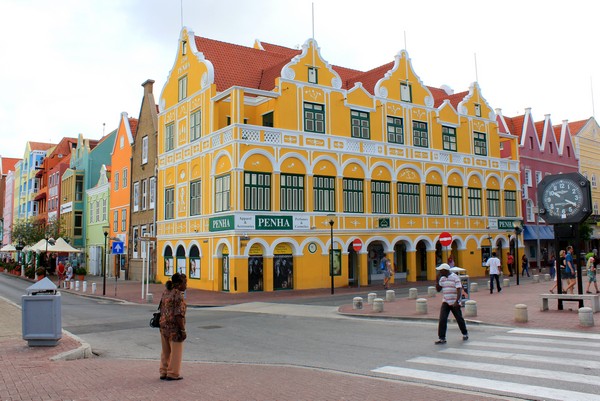
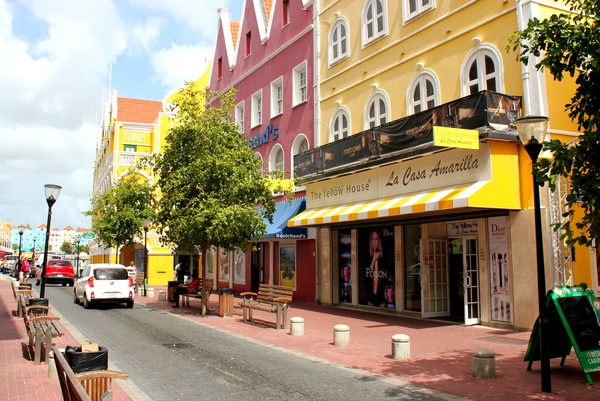
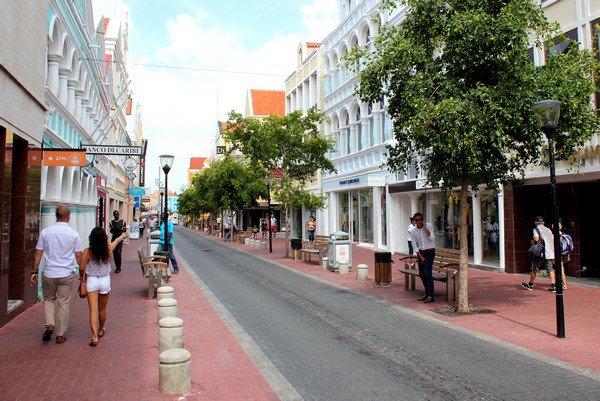
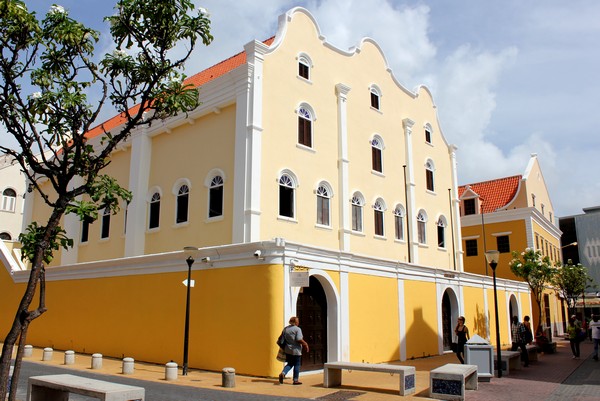
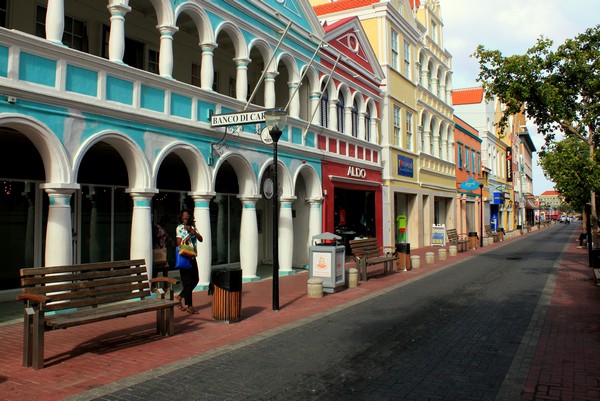
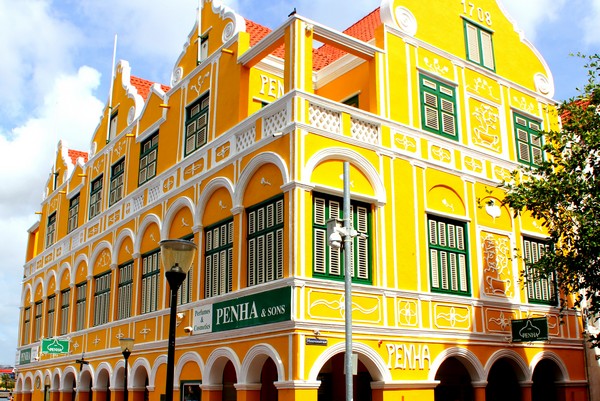
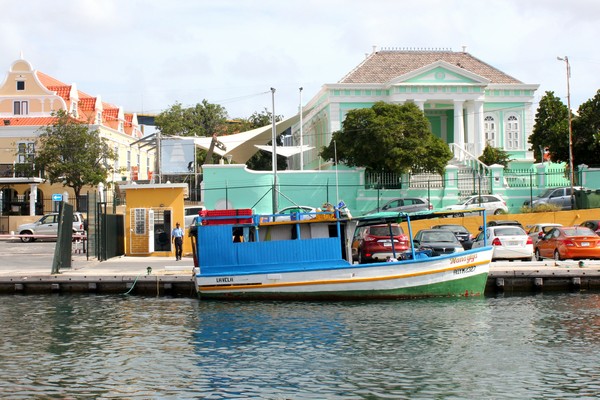
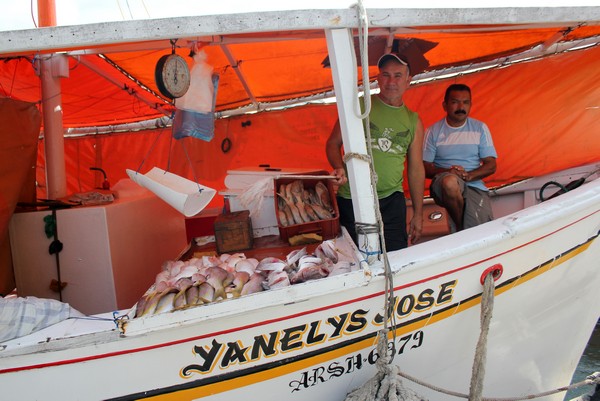
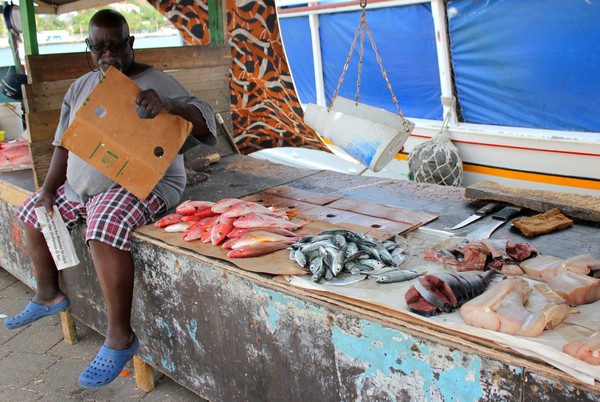
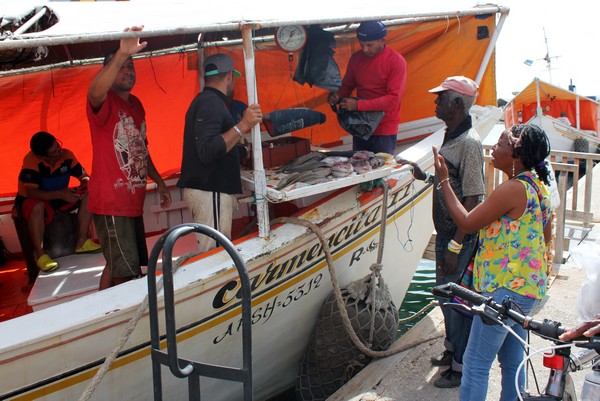
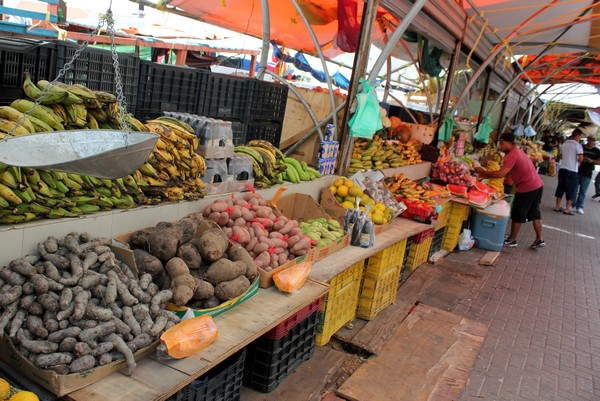
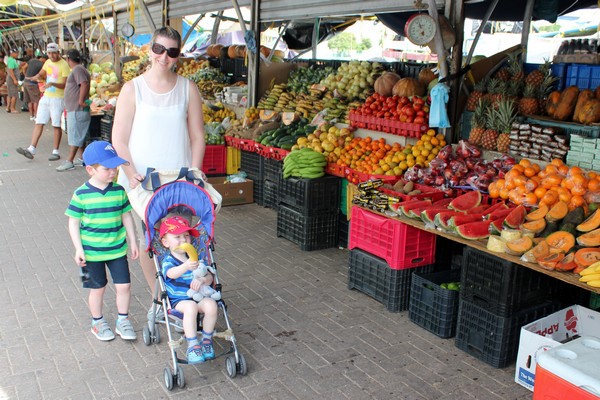
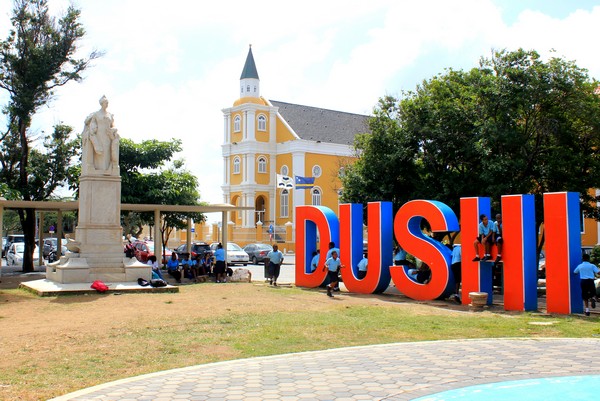
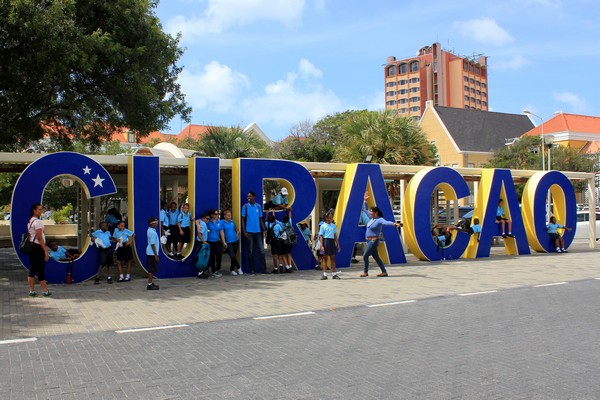
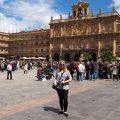
Cool post! Just put Curacao on our travel list. One question… what are prices like for accommodation and food? We are fellow Canadians.
Prices for accommodation will vary depending on the time of year you visit. We visited during peak season, so it was not cheap. It’s not a cheap island, but there are ways to save money. If you are in a touristy area, like we were, it will be more expensive. It’s more expensive than Mexico or Dominican Rep, but less expensive than US or Europe.
Great to see the Dutch brought their eye for architecture with them when they came to Curacao … great pictures!